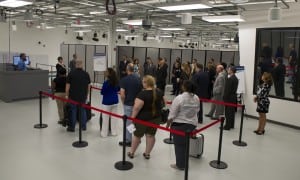
A Homeland Security pilot test begun last year to use facial recognition technology to verify the identities of foreign nationals leaving the U.S. on one daily international flight from an airport in Atlanta has transitioned to the Biometric Verification System (BVS), demonstrating that a congressionally-mandated biometric exit solution is beginning to take shape.Over the next several months Customs and Border Protection (CBP) will continue testing different facial recognition devices and work with airlines to integrate the BVS system at additional…

 By
By 











